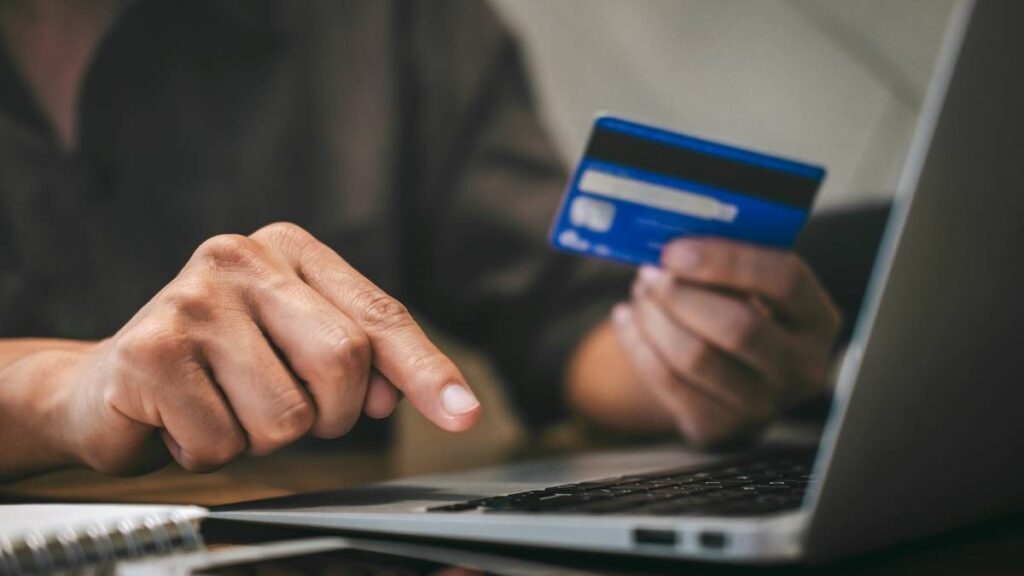
If you’ve ever wondered, “Why is a credit card a type of debt?” you’re not alone. Many young adults, students, and first-time credit card users don’t realize that swiping a card is borrowing money. Credit cards are a powerful financial tool, but they come with responsibilities. When used wisely, they can help you build credit and manage expenses. Used poorly, they can lead to a cycle of debt. In this beginner-friendly guide, we’ll break down why is a credit card a type of debt, how it works, and how to use it responsibly to avoid financial stress.
What Is a Credit Card and How Does It Work?
Credit cards can feel like magic—you swipe, and the purchase is covered. But behind the scenes, there’s a financial agreement at play. Let’s explore credit card debt explained by looking at how these cards function.
Borrowing Money to Spend Now, Pay Later
When you use a credit card, you’re not spending your own money—you’re borrowing from the bank or card issuer. They pay the merchant on your behalf, and you promise to repay them later. This borrowing is why a credit card is a type of debt. Every swipe adds to your balance, which you owe, even if you plan to pay it off quickly.
Credit Limits and Monthly Billing Cycles
Your credit card comes with a credit limit, the maximum amount you can borrow. For example, if your limit is $1,000, you can spend up to that amount. Each month, you get a bill showing what you’ve spent. You can pay the full balance, a minimum amount, or something in between. Paying less than the full balance means you carry debt into the next month, often with added interest.
Why Is a Credit Card a Type of Debt?
So, why is a credit card a type of debt? Let’s break it down clearly:
- Borrowing from a lender: When you use your card, the bank temporarily covers the cost. You’re essentially taking a loan for each purchase.
- Repayment with interest: If you don’t pay the full balance by the due date, the bank charges interest on what you owe. This can make your debt grow over time.
- Revolving debt definition: Credit cards are a form of revolving debt. Unlike a car loan with fixed payments, you can borrow, repay, and borrow again up to your credit limit. This flexibility is what makes credit cards unique but also risky.
- You owe money immediately: The moment you swipe, you owe the bank, even if you pay it off later. That’s why every credit card transaction creates debt.
Understanding how credit card interest works is key. Interest is the extra cost the bank charges for lending you money. For example, if you owe $500 and your card has a 20% annual interest rate, you could owe an extra $100 in interest over a year if you don’t pay it off.
Types of Debt: Where Credit Cards Fit In
Not all debt is the same. Here’s how credit cards compare to other types of debt:
| Type of Debt | Description | Examples |
|---|---|---|
| Revolving Debt | Flexible borrowing with no fixed end date. You can borrow and repay repeatedly. | Credit cards, lines of credit |
| Installment Debt | Fixed loan amount repaid in equal payments over time. | Auto loans, student loans, mortgages |
Credit cards fall under revolving debt because you can keep using them as long as you stay under your credit limit and make payments. They’re also unsecured debt examples—no collateral (like a house or car) backs the loan. If you don’t pay, the bank can’t take your possessions, but you’ll face other consequences.
Credit cards vs loans: Unlike a fixed-term loan, credit cards let you borrow small or large amounts as needed, but high interest rates can make them costlier if not managed well.
What Happens If You Don’t Pay Your Credit Card Bill?
Ignoring your credit card bill can lead to serious problems. Here’s what could happen:
Interest Charges and Late Fees
If you don’t pay the full balance by the due date, you’ll be charged interest on the remaining amount. For example, a $1,000 balance at 18% interest could cost you $180 a year in interest alone. Miss a payment, and you might also face a late fee, often $25–$40.
Damage to Your Credit Score
Your payment history affects your credit score, a number that shows how reliable you are with borrowing. Late or missed payments can lower your score, making it harder to get loans, apartments, or even jobs in the future.
Debt Collection or Legal Action in Severe Cases
If you stop paying altogether, your debt may be sent to a collection agency. They’ll contact you repeatedly to recover the money. In extreme cases, the bank could take legal action, though this is rare for small balances.
Is Credit Card Debt Always Bad?
Credit card debt isn’t inherently bad—it depends on how you use it. Let’s look at responsible vs irresponsible credit use.
Responsible vs Irresponsible Credit Use
- Responsible: Using your card for planned purchases and paying the full balance monthly.
- Irresponsible: Spending beyond your means or only paying the minimum, letting debt pile up with interest.
Building Credit by Paying on Time
Paying your bill on time helps build a strong credit score. A good score can lead to better loan rates or easier approvals for things like renting an apartment.
Avoiding Interest by Paying the Full Balance Monthly
If you pay your entire balance before the due date, you avoid interest charges. This makes credit cards a convenient tool without the cost of debt.
Real-Life Examples
Let’s see why is a credit card a type of debt through relatable scenarios:
Smart Credit Card Tips to Avoid Debt
To keep why is a credit card a type of debt from becoming a problem, follow these tips:
- Only spend what you can afford: Treat your card like cash. If you can’t pay for it now, don’t charge it.
- Pay your bill in full every month: This avoids interest and keeps debt at bay.
- Don’t use cards for regular shortfalls: Relying on credit for rent or groceries can lead to a debt cycle.
- Track your spending: Use budgeting apps or check your card’s online portal to monitor purchases.
- Avoid cash advances: These come with high fees and immediate interest, making them expensive.
FAQs
Are credit cards considered loans?
Yes, credit cards are like a flexible loan. Each time you swipe, you borrow money from the bank, which you must repay, often with interest if not paid in full.
Can using a credit card responsibly still count as debt?
Technically, yes. Every purchase creates debt because you’re borrowing. However, paying the full balance monthly means you clear the debt before interest applies.
What type of debt is a credit card—secured or unsecured?
Credit cards are unsecured debt. There’s no collateral (like a house or car) tied to them, so the bank relies on your promise to repay.
Conclusion
So, why is a credit card a type of debt? Because every swipe is borrowing money from the bank, which you’re obligated to repay. Credit cards are a powerful tool for convenience and building credit, but they’re not free money. By understanding how credit card interest works and using cards responsibly—paying on time, staying within your budget, and avoiding unnecessary debt—you can enjoy their benefits without the stress. Treat your credit card like a tool, not a temptation, and you’ll stay in control of your finances.

Emma Rose is a U.S.-based personal finance writer and a regular contributor at Cardix.us. She focuses on topics like credit cards, credit scores, and everyday money management. Emma’s writing makes complex financial concepts simple and practical, helping readers make smarter credit and spending decisions with confidence.

